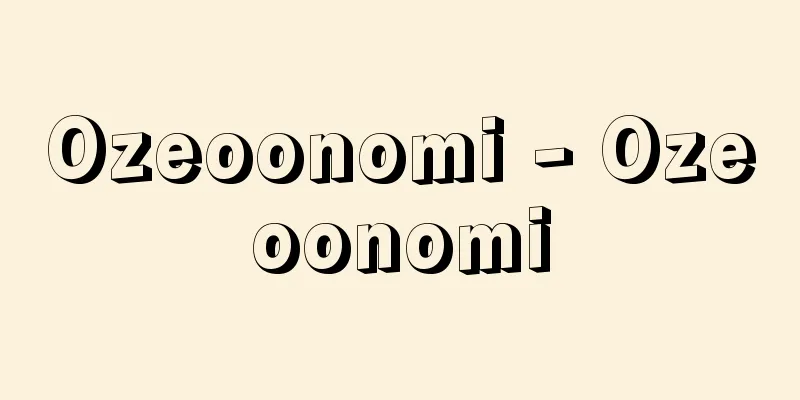Katayama Sen - Katayama Sen

|
A leader of the Japanese labor movement and the international communist movement. Born on December 3, 1858, in Hadeki Village, Kume Nanjo County, Mimasaka Province (Hadeki, Kumenan Town, Kume County, Okayama Prefecture) as the second son of the village headman Yabumoto family, he was called Suga Taro. At the age of 19, he was adopted by the Katayama family to be exempted from conscription, and later changed his name to Seng. In 1884 (Meiji 17), he traveled to the United States and studied at Popkins Academy and other universities for about 11 years while working as a dishwasher, earning a Master of Arts degree from Grinnell College and a Bachelor of Divinity from Yale University. During this time, he became a Christian, but was deeply interested in issues of poverty, labor issues, and socialism. He returned to Japan in 1896, a year after the end of the Sino-Japanese War, and in 1897, when labor issues were beginning to attract public attention, he founded the Labor Union Promotion Association together with Takano Fusataro and others in July, becoming editor-in-chief of the association's journal, Labor World, and leading labor unions such as the Ironworkers' Union, the Typographers' Union, and the Nippon Steel Correction Association. In May 1901 (Meiji 34), he became one of the founders of the Social Democratic Party, Japan's first socialist party, and in the summer of 1904, when the Russo-Japanese War broke out, he attended the Universal Socialist Party Congress in Amsterdam as Japan's representative, where he was elected vice-chairman along with Russia's Plekhanov, and exchanged handshakes in promise of non-war, catapulting him into the international spotlight. After the Russo-Japanese War, in contrast to Kotoku Shusui and others who began to advocate direct action, he stuck to parliamentary policies and worked hard to realize universal suffrage and to unite workers. However, he was sentenced to five months in prison for leading the Tokyo Municipal Tramway strike of 1811-1812 following the High Treason Incident, and was not allowed to work freely even after his release, so he traveled to the United States in September 1814, just after the outbreak of World War I. During his stay in America, he worked to establish a Japanese socialist group in America, while also coming into contact with American anti-war activists. He studied the Russian Revolution and its leader Lenin's "State and Revolution" and became a communist. After working hard to establish the Communist Party of America and the Mexican Communist Party, he went to Moscow, where he was elected as a senior member of the Executive Committee of Comintern in 1922 and led the Japanese communist movement, including the establishment of the Japanese Communist Party and the creation of its platform. He was also active in the anti-war movement, including the International Anti-Imperialist League, but died of sepsis in Moscow on November 5, 1933, at the age of 74. His remains are buried in the Kremlin Wall along with top communist leaders such as Clara Zetkin. [Hiroshi Okamoto] "Autobiography" by Katayama Sen (1954, Iwanami Shoten)" ▽ "The Collected Works of Katayama Sen, 3 volumes (1959-60, Kawade Shobo)" ▽ "Katayama Sen" by Kawamura Nozomi (1974, Shiobunsha)" ▽ "Katayama Sen" by Sumiya Mikio (1977, University of Tokyo Press)" ©Shogakukan Library "> Katayama Sen Source: Shogakukan Encyclopedia Nipponica About Encyclopedia Nipponica Information | Legend |
|
日本労働運動、国際共産主義運動の指導者。安政(あんせい)6年12月3日、美作(みまさか)国粂(くめ)南条郡羽出木(はでき)村(岡山県久米郡久米南(くめなん)町字羽出木)に、庄屋(しょうや)藪本家の二男として生まれ、菅太郎と称す。19歳のとき徴兵免除のため片山家の養子となり、のちに潜と改名。1884年(明治17)渡米し、皿洗いなどしながらポプキンズ・アカデミーはじめ多くの大学で約11年間勉学し、グリンネル大学で文学修士、エール大学で神学士となる。この間にキリスト教徒となるが、貧民問題、労働問題および社会主義に深い関心を寄せる。 日清(にっしん)戦争終結の翌年の1896年帰国、労働問題が世間の注目を浴びるようになった97年、高野房太郎らとともに7月に労働組合期成会を結成、その機関誌『労働世界』の編集長となり、鉄工組合、活版工組合、日鉄矯正会などの労働組合を指導する。1901年(明治34)5月には、わが国最初の社会主義政党社会民主党の創立者の一人となり、日露戦争が始まった04年の夏にはアムステルダムの万国社会党大会に日本代表として出席、ロシアのプレハーノフとともに副議長に選ばれ、不戦の握手を交わして国際的脚光を浴びた。日露戦争後は、直接行動論を主張するようになった幸徳秋水(こうとくしゅうすい)らに対して、議会政策を堅持し、普通選挙の実現や労働者の団結に力を尽くすが、大逆事件のあとの11~12年の東京市電争議を指導したため重禁錮5か月の刑に処され、出獄後も自由な活動ができず、第一次世界大戦勃発直後の14年9月にアメリカに渡る。 滞米中は、在米日本人社会主義グループの結成に努めると同時に、アメリカの反戦活動家と接触をもって活動し、ロシア革命とその指導者レーニンの『国家と革命』に学んで共産主義者となり、アメリカ共産党、メキシコ共産党の創立に力を尽くしたあとモスクワに赴き、1922年にはコミンテルンの執行委員会幹部会員に選ばれ、日本共産党の設立や綱領作成など日本の共産主義運動を指導した。また、国際反帝同盟はじめ反戦運動の面でも活躍したが、昭和8年11月5日、敗血症のためモスクワで死去。74歳。その遺骨はクララ・ツェトキンなど共産主義運動の最高指導者とともにクレムリンの壁に葬られている。 [岡本 宏] 『片山潜著『自伝』(1954・岩波書店)』▽『『片山潜著作集』全3巻(1959~60・河出書房)』▽『河村望著『片山潜』(1974・汐文社)』▽『隅谷三喜男著『片山潜』(1977・東京大学出版会)』 ©小学館ライブラリー"> 片山潜 出典 小学館 日本大百科全書(ニッポニカ)日本大百科全書(ニッポニカ)について 情報 | 凡例 |
<<: Katayamazu [Hot Spring] - Katayamazu
Recommend
Classroom - classroom
Classrooms are the basic facilities of a school w...
Gulf of Finland
A branch of the Baltic Sea between the Scandinavi...
Drude, PKL (English spelling) DrudePKL
…In contrast to free electrons, electrons that ar...
Izu Chohachi - Izu no Chohachi
Date of birth: August 5, 1815 Late Edo period; pla...
Malaconotinae
…A general term for birds of the family Shrike, f...
Jacobin Club (English name) Club des Jacobins
A political association formed by members of the B...
Reverse extrusion
...Products made by extrusion include aluminum sa...
Midgard
…Until the early Middle Ages, people lived in sma...
Construction Business Law
The purpose of this law, Act No. 100 of 1949, is ...
Stralenberg, Filipp Ijhan
[Birth] 1676 [Died] 1746 Swedish Siberianist and O...
The Architects' Collaborative
…His own house (1938) and Aluminum City (1943) ar...
Fukae Roshu
A painter from the mid-Edo period. His given name...
Regenerative Brake - Kaisei Brake
A brake that uses an electric motor as a generator...
Valentino - Rudolph Valentino
American film actor. Born May 6th in Castellaneto...
Chernigov
The capital of Chernigov Oblast in northern Ukrai...









